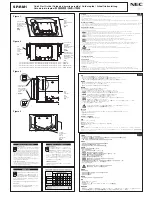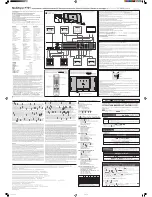
15 Cell Balancing
15.1 Cell Balancing Overview
The BQ76942 device supports passive cell balancing by bypassing the current of a selected cell during charging
or at rest, using either integrated bypass switches between cells, or external bypass FET switches. The device
incorporates a voltage-based balancing algorithm which can optionally autonomously balance cells without
requiring any interaction with a host processor. Or if preferred, balancing can be entirely controlled manually
from a host processor. For autonomous balancing, the device will only balance non-adjacent cells in use (it does
not consider inputs used to measure interconnect as cells in use). In order to avoid excessive power dissipation
within the BQ76942 device, the maximum number of cells allowed to balance simultaneously can be limited
by configuration setting. For host-controlled balancing, adjacent as well as non-adjacent cells can be balanced.
Host-controlled balancing can be controlled using specific subcommands sent by the host. The device also
returns status information regarding how long cells have been balanced through subcommands.
When host-controlled balancing is initiated using subcommands, the device starts a timer and will continue
balancing until the timer reaches a programmed value, or a new balancing subcommand is issued (which resets
the timer). This is included as a precaution, in case the host processor initiated balancing but then stopped
communication with the BQ76942 device, so that balancing would not continue indefinitely.
The BQ76942 device can automatically balance cells using a voltage-based algorithm based on environmental
and system conditions. Several settings are provided to control when balancing is allowed, which are described
in detail in the
BQ76942 Technical Reference Manual
Due to the current that flows into the cell input pins on the BQ76942 device while balancing is active, the
measurement of cell voltages and evaluation of cell voltage protections by the device is modified during
balancing. Balancing is temporarily disabled during the regular measurement loop while the actively balanced
cell is being measured by the ADC, as well as when the cells immediately adjacent to the active cell are being
measured. Similarly, balancing on the top cell is disabled while the stack voltage measurement is underway. This
occurs on every measurement loop, and so can result in significant reduction in the average balancing current
that flows. In order to help alleviate this, additional configuration bits are provided which cause the device to
slow the measurement loop speed when cell balancing is active. The BQ76942 device will insert current-only
measurements after each voltage and temperature scan loop to slow down voltage measurements and thereby
increase the average balancing current.
The device includes an internal die temperature check, to disable balancing if the die temperature exceeds a
programmable threshold. However, the customer should still carefully analyze the thermal effect of the balancing
on the device in system. Based on the planned ambient temperature of the device during operation and the
thermal properties of the package, the maximum power should be calculated that can be dissipated within
the device and still ensure operation remains within the recommended operating temperature range. The cell
balancing configuration can then be determined such that the device power remains below this level by limiting
the maximum number of cells that can be balanced simultaneously, or by reducing the balancing current of each
cell by appropriate selection of the external resistance in series with each cell.
SLUSE14B – DECEMBER 2020 – REVISED DECEMBER 2021
62
Copyright © 2021 Texas Instruments Incorporated
Product Folder Links:
Содержание BQ76942
Страница 84: ......
















































